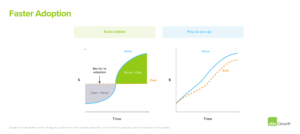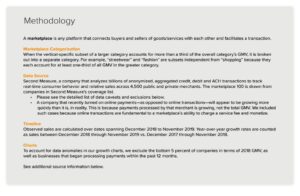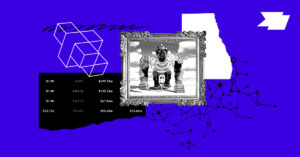In 1688, the British Parliament conspired successfully to overthrow the increasingly tyrannical James II and install his daughter Mary and her husband, William of Orange, on the throne. While many factors motivated the revolution, concerns about James’s centralized, authoritarian powers were key. James had dissolved Parliament, claimed that he could unilaterally write laws, and repeatedly forced wealth holders to “lend” the Crown money at low interest rates.
After James’s overthrow, often called the “Glorious Revolution,” Members of Parliament moved to decentralize power. They presented the new monarchs with a Declaration of Rights, which asserted that from then on, Parliament, and not the Crown, would have the authority to write and execute laws and to approve new taxes, among other powers. This decentralization of power may have triggered a new era of institutional trust, permanently altering Great Britain’s social and economic trajectory.
The resulting framework — the tenet that trust can spur growth — has had long-running implications for political and economic institutions ever since: organizations with fairer governance structures that credibly protect stakeholder interests tend to win.
Today, the large Web 2.0 platforms that dominate our economic and social experiences lack these fair structures. But web3 governance — if built thoughtfully in a way that reflects lessons from the history of governance, as we have argued — will offer an embedded foundation of credible trust to build the next generation of platforms.
Many of the most successful web3 protocols have an opportunity to cement their long-term competitive advantage by sharing governance and giving up some of their power, sparking engaged community governance. Done correctly, this can unleash new innovation and economic growth anchored in social legitimacy — a Glorious Revolution for the internet.
Web2’s accidental monarchies
Big Tech companies have, metaphorically at least, become accidental versions of James II: powerful entities who govern unilaterally. As Ben Thompson has pointed out in recent pieces for Stratechery, their enormous success in delivering products and experiences that users value, combined with the network effects and natural incentives to scale in digital marketplaces, has given them authority over a broad swath of commercial and social activity online while often placing them at odds with the users and contributors who create value for them.
When these platforms were first growing, these arrangements posed little problem. As more users joined the platform, more contributors wanted to produce goods for the platform; as more contributors produced more goods on the platform, more users wanted to use the platform. This flywheel is at the heart of the success of Web 2.0 platforms (and has roots going back even to medieval Champagne fairs).
But ongoing disputes between Amazon and its third-party merchants, Etsy and its sellers, and Apple and its iOS developers, among others, suggest that at some point the flywheel starts spinning off axis. When platforms grow, contributors become locked in. And inevitably, inch by inch, they start to feel that their interests are no longer served in the same ways.
The ultimate consequence is that, on the margin, without credible promises that their interests will be reflected in the platform’s governance process, platform contributors become less enthusiastic to contribute to platforms or to join new ones.
But this issue goes beyond economic considerations, too. Some of the most vexing problems of absolute power are actually about values, rights, and social legitimacy. When large platforms unilaterally make decisions that affect society, but that are perceived as reflecting the platform’s interests rather than society’s, they become less legitimate.
When operating well, democracy, in contrast, generates social legitimacy by setting policies through processes that people interpret as fair, neutral, and considerate of their views. But Web 2.0 platforms have no such process, and governments have been reluctant to intervene by creating processes of their own. As such, they remain accidental monarchies forced to make decisions on their own, without widespread user input and the corresponding legitimacy it engenders.
How platforms can empower community governance
The governance challenges of large Web 2.0 platforms stem from the unilateral decisions they make over commercial and social activity online. web3 can help mitigate this problem by giving platform participants important powers to set rules in stone, increasing social legitimacy and spurring economic growth. But this introduces important new organizational design questions concerning the relationships between a protocol and its application interfaces, or clients, that grant access to it.
(Source: Miles Jennings)
Here is an example framework, including some of the open questions, exploring how governance architectures could be designed to incorporate these features in the platforms of the future.
1. Encoding rules at the protocol layer.
- web3 platforms can encode specific commitments into smart contracts at the protocol layer. This could include things like revenue sharing or fee structures, helping to incentivize investment by creators, developers, sellers, and other contributors.
- These fundamental commitments create a federal-like system: protocol-level rules encoded in smart contracts create a uniform foundation of constraints, while individual applications or clients are free to add further rules on top.
2. Empowering the community to govern more granularly at the app layer.
- Many important governance decisions — like determining when a product or a piece of content violates community standards — require subjective judgment and cannot be readily encoded into self-executing smart contracts.
- Empowering the community to make governance decisions like these leads platform participants to trust the platform long-term, and to preserve its social legitimacy. These decisions can be executed at the app layer.
- web3 offers new tools to enable this necessary community governance:
- First, distribute voting power to relevant stakeholders: this could be equitably distributed governance tokens, 1:1 non-transferable voting NFTs, some combination of both, or a new voting construct (for example based on social media profiles, etc.).
-
-
- Build in delegation and other ways to foster representative government to avoid the pitfalls of low participation.
-
- Then, create tools for the community to make policy. This might include:
- Also create tools for the community to enforce policy. This could include:
- Incentives for “auditors” to report violations of platform rules, with a penalty for false flags. This could be an app-level staking mechanism.
- Legislatures or other representative bodies can oversee systems of AI-based enforcement at scale, auditing the performance of the enforcement system and/or approving proposed changes to enforcement-related algorithms.
- And finally, create tools for the community to adjudicate disputes regarding policy enforcement. This might include:
- Juries of peers who review a case and determine whether the enforcement action stands or is overturned.
- A panel of experts or trusted members of the community who issue judgments on particularly difficult and important cases that set precedent for future cases with parallel circumstances.
3. Separating protocol from app governance.
- In some cases, community governance — using the tools we just laid out — can occur solely at the app level, with different interfaces free to experiment with differing levels of policy restrictions, algorithms for recommendation and curation, and so on. Competition among interfaces provides users choice, and choice fosters legitimacy and good governance.
- But communities must also decide on the core mission of the protocol: should it be a public good or a base layer that accrues value from interfaces building on top of it?
- Moreover, if revenues accrue to the protocol level, then community governance will be required to determine how to manage the treasury and distribute public goods.
- And in some cases, issues of negative externalities may require further, limited community governance at the protocol layer.
- If an interface engages in activity that damages the entire protocol, then community governance at the protocol layer is necessary to enjoin this activity and preserve the value of the protocol.
- Disputes among apps, and other issues regarding the relationship between them, may also require adjudication at the protocol level.
- Finally, protocol-level governance may be necessary to update the protocol in ways that encourage ongoing competition among apps, because this competition is necessary for the long-run legitimacy and health of the ecosystem.
- To the extent it’s needed, protocol-level governance can use the same tools for community governance that we laid out above for app-level governance, including token-based voting, delegation, juries, sortition, etc.
4. Changing the rules (if necessary).
An array of design choices exists in determining the relationship between protocol and app layers. Protocols may be fully neutral and unchangeable, or they may incorporate an amendment process. Conversely, the apps could feature more adaptability suited for their curated communities, subject to core limitations imposed by the protocol.
- A minimum amount of governance at the protocol level enables the greatest amount of freedom and flexibility at the app level.
- However, the protocol may wish to retain some degree of adaptability.
- This creates a potential market-driven trade-off between immutable credible commitments at the protocol layer and user retention, or growth choices, at the app layer; in other words, trustworthiness versus adaptability.
***
web3 offers an alternative to the accidental monarchies of the modern era. The underlying technology, by its very nature, can empower communities to govern themselves, reducing the centralized authority that has come to define Web 2.0. If done thoughtfully, this “Glorious Revolution” for the internet will lead to more socially legitimate platforms built on a layer of trust — one that, as history foreshadows, could lead to new types of growth and innovation.
In pursuing this revolution, we firmly believe in governance minimalism: projects and protocols should not add more complex forms of governance than they need. But very large platforms that affect all of society may require complex forms of governance, because they are the new public commons. The public should have a say in how they operate.
The path from where we are today to fully functioning, well-governed decentralized platforms will be a windy one. Democracy is messy, and no design survives the real world. But the promise of web3 lies in its fundamental principles and rapid experiments it enables. As we learn from these experiments, we’ll build increasingly effective decentralized governance that will make possible the democratic platforms of the future — platforms where users, developers, creators, sellers, and not monarchs, collectively rule.
***
Andrew Hall is a Professor of Political Economy in the Graduate School of Business at Stanford University and a Professor of Political Science. He works with the a16z research lab and is an advisor to tech companies, startups, and blockchain protocols on issues at the intersection of technology, governance, and society.
Porter Smith is the Head of Network Operations for a16z’s crypto team. He focuses on governance architecture, organizational design, and decentralized decision-making within web3.
***
Editor: Tim Sullivan
***
The views expressed here are those of the individual AH Capital Management, L.L.C. (“a16z”) personnel quoted and are not the views of a16z or its affiliates. Certain information contained in here has been obtained from third-party sources, including from portfolio companies of funds managed by a16z. While taken from sources believed to be reliable, a16z has not independently verified such information and makes no representations about the enduring accuracy of the information or its appropriateness for a given situation. In addition, this content may include third-party advertisements; a16z has not reviewed such advertisements and does not endorse any advertising content contained therein.
This content is provided for informational purposes only, and should not be relied upon as legal, business, investment, or tax advice. You should consult your own advisers as to those matters. References to any securities or digital assets are for illustrative purposes only, and do not constitute an investment recommendation or offer to provide investment advisory services. Furthermore, this content is not directed at nor intended for use by any investors or prospective investors, and may not under any circumstances be relied upon when making a decision to invest in any fund managed by a16z. (An offering to invest in an a16z fund will be made only by the private placement memorandum, subscription agreement, and other relevant documentation of any such fund and should be read in their entirety.) Any investments or portfolio companies mentioned, referred to, or described are not representative of all investments in vehicles managed by a16z, and there can be no assurance that the investments will be profitable or that other investments made in the future will have similar characteristics or results. A list of investments made by funds managed by Andreessen Horowitz (excluding investments for which the issuer has not provided permission for a16z to disclose publicly as well as unannounced investments in publicly traded digital assets) is available at https://a16z.com/investments/.
Charts and graphs provided within are for informational purposes solely and should not be relied upon when making any investment decision. Past performance is not indicative of future results. The content speaks only as of the date indicated. Any projections, estimates, forecasts, targets, prospects, and/or opinions expressed in these materials are subject to change without notice and may differ or be contrary to opinions expressed by others. Please see https://a16z.com/disclosures for additional important information.
- a16z crypto
- Andreessen Horowitz
- Bitcoin
- blockchain
- blockchain compliance
- blockchain conference
- coinbase
- coingenius
- Consensus
- Crypto & Web3
- crypto conference
- crypto mining
- cryptocurrency
- decentralized
- DeFi
- Digital Assets
- ethereum
- machine learning
- non fungible token
- plato
- plato ai
- Plato Data Intelligence
- Platoblockchain
- PlatoData
- platogaming
- Polygon
- proof of stake
- W3
- zephyrnet











